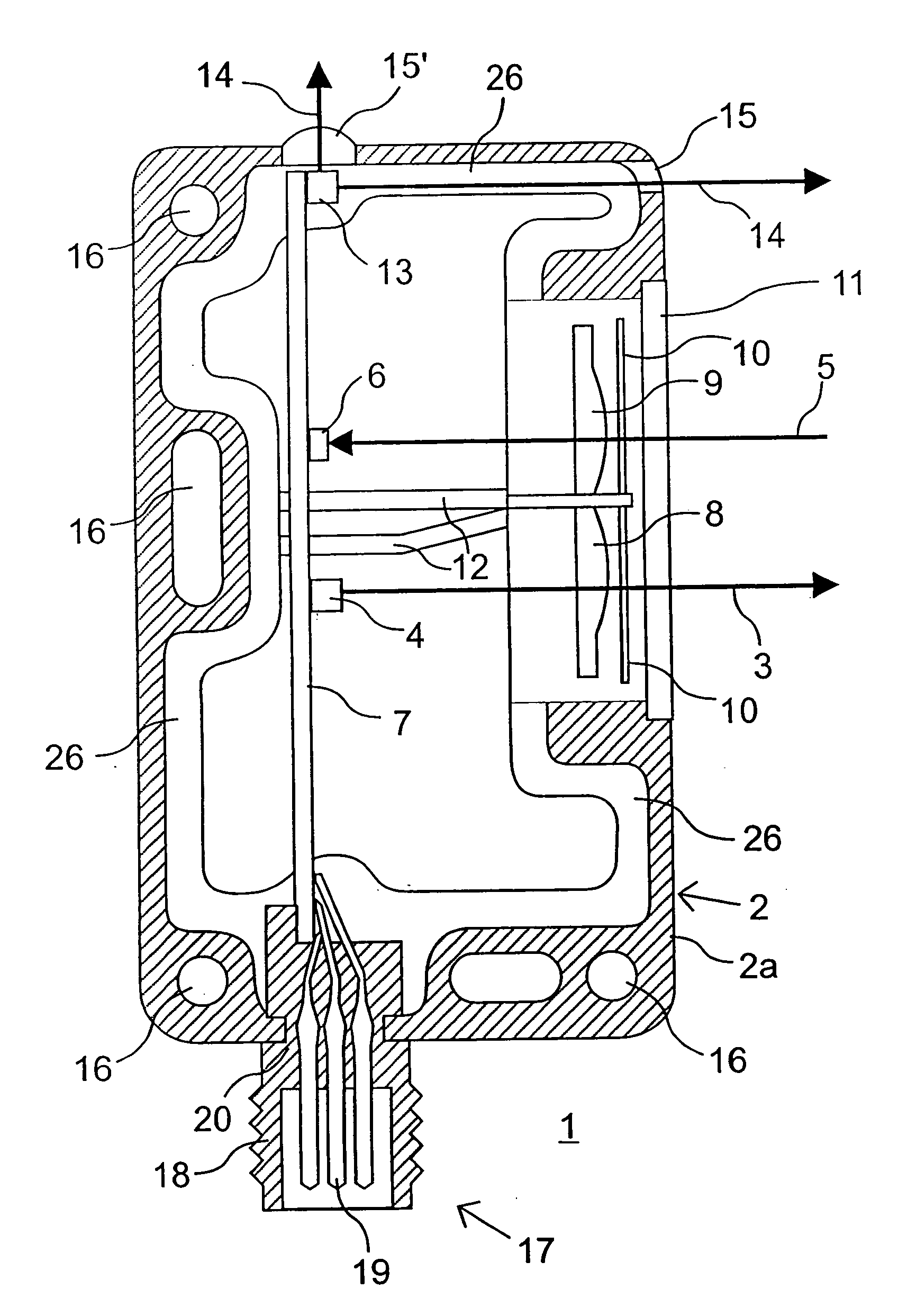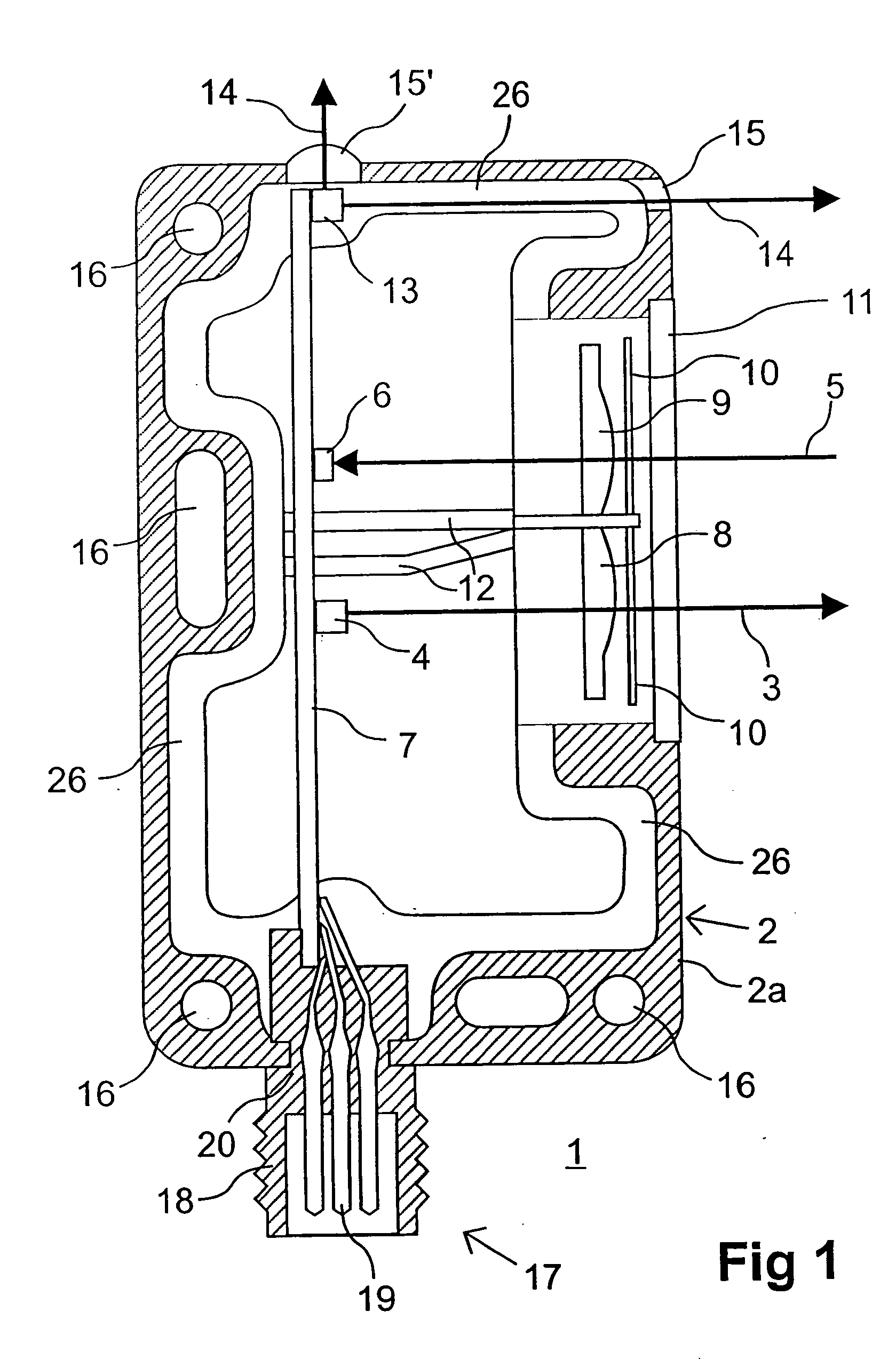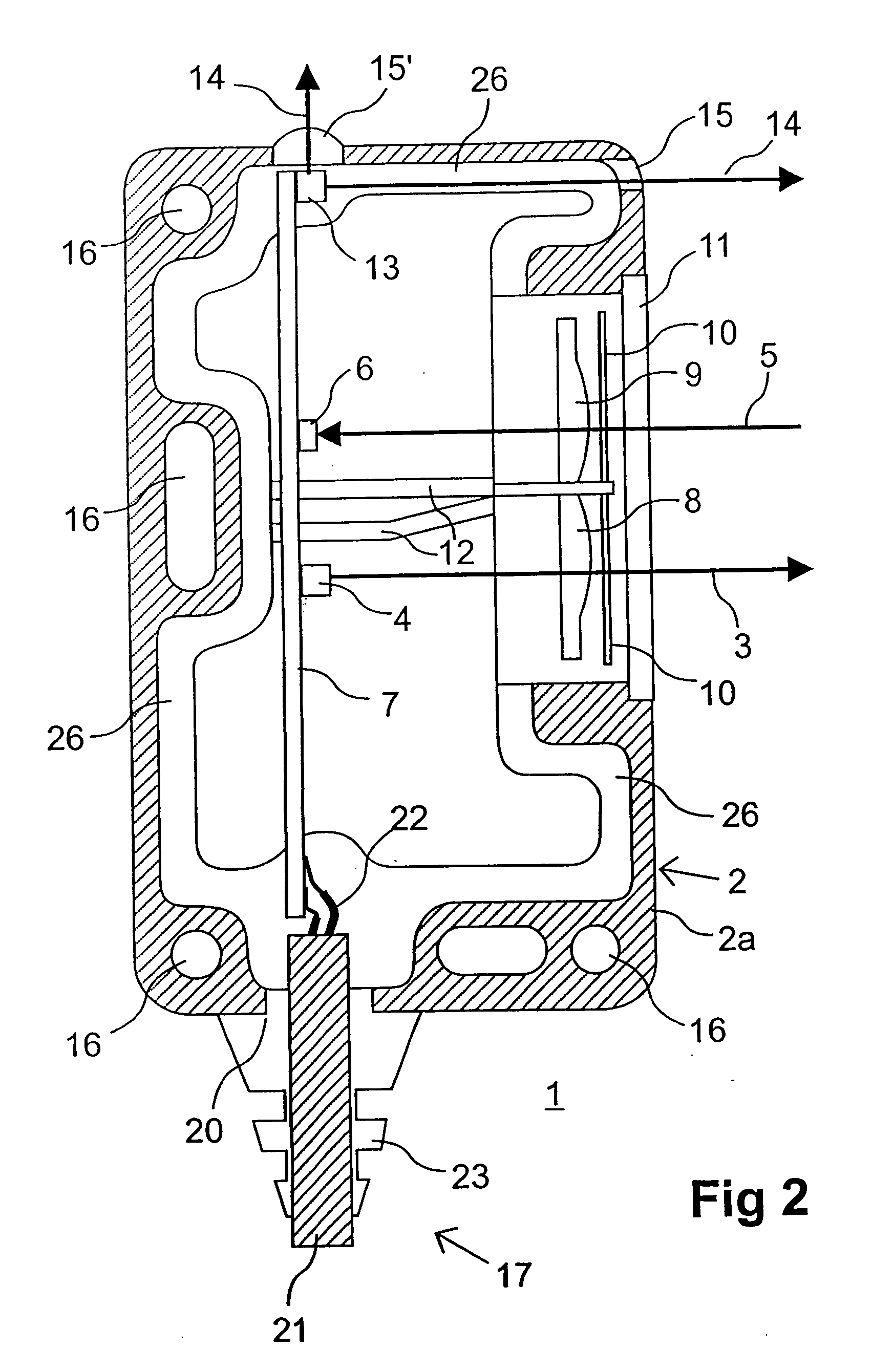Optical sensor
a technology of optical sensors and optical sensors, applied in the field of optical sensors, can solve the problems of unfavorable increase in production costs, and achieve the effect of a particularly cost-effective and economical production of optical sensors
- Summary
- Abstract
- Description
- Claims
- Application Information
AI Technical Summary
Benefits of technology
Problems solved by technology
Method used
Image
Examples
Embodiment Construction
[0027]FIG. 1 shows a first exemplary embodiment of an optical sensor 1 for detecting objects in an area to be monitored, wherein the optical sensor 1 herein is embodied as light scanner 7. However, the optical sensor 1 can, in principle, also be embodied as a light barrier, reflection light barrier, distance-measuring sensor or the like.
[0028] The optical sensor 1 is provided with a casing 2 of metal or plastic for accommodating optical and electronic components. FIG. 1 shows the casing body 2a which can be closed off with a lid 2b, wherein the lid is shown in FIGS. 3a,b. For object detection, the optical sensor 1 is provided with a transmitter 4 that emits light rays 3 and a receiver 6 that receives light rays 5. The transmitter 4 is a light-emitting diode or the like, while the receiver 6 is a photodiode or the like. However, multiple arrangements of transmitters 4 and receivers 6 are generally also possible.
[0029] The transmitter 4 and the receiver 6 are disposed on a circuit b...
PUM
 Login to View More
Login to View More Abstract
Description
Claims
Application Information
 Login to View More
Login to View More - R&D
- Intellectual Property
- Life Sciences
- Materials
- Tech Scout
- Unparalleled Data Quality
- Higher Quality Content
- 60% Fewer Hallucinations
Browse by: Latest US Patents, China's latest patents, Technical Efficacy Thesaurus, Application Domain, Technology Topic, Popular Technical Reports.
© 2025 PatSnap. All rights reserved.Legal|Privacy policy|Modern Slavery Act Transparency Statement|Sitemap|About US| Contact US: help@patsnap.com



